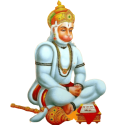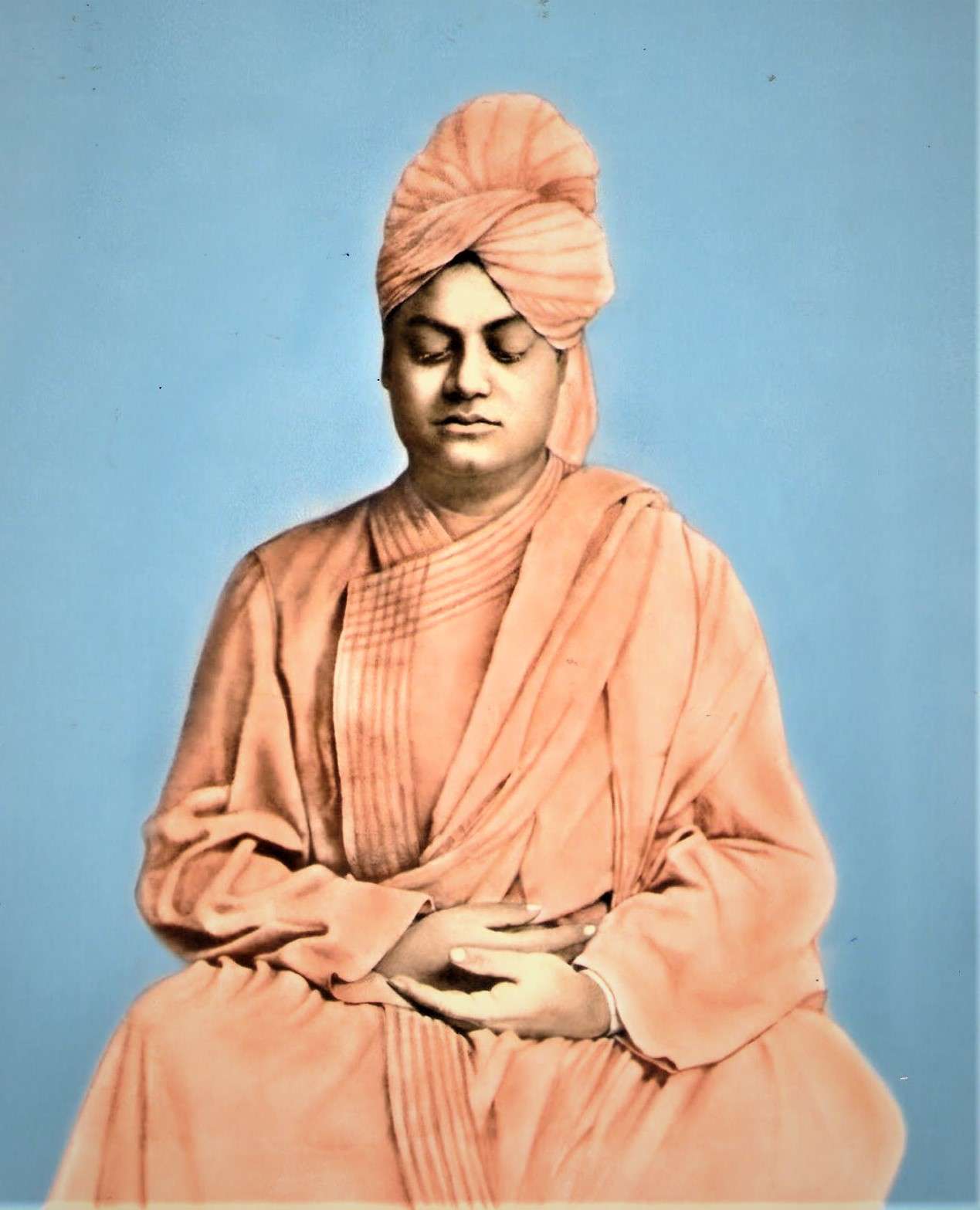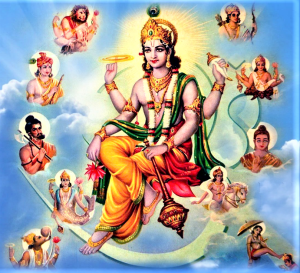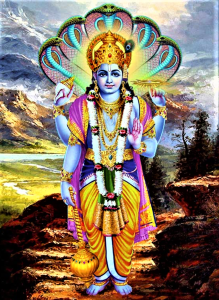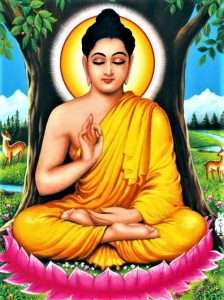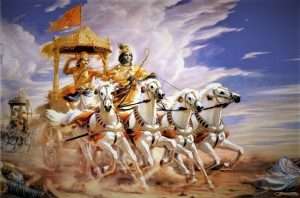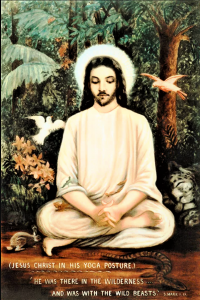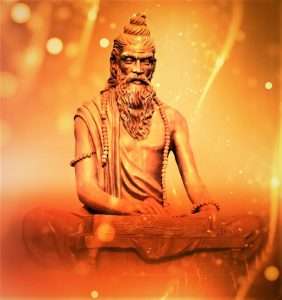Mind
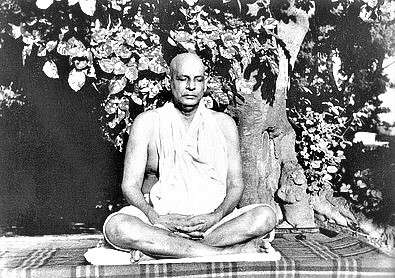
In the field of Yoga and spirituality, “Mind” is one of the most important topics. It is so important that Amritabindu Upaniṣad (Verse 2) says, “mind is the cause of bondage and liberation. A mind that craves for sense objects causes bondage and a mind that doesn’t craves for sense objects is liberated.” In true sense all aspects of Yoga and spirituality, aims to work on mind and its various aspects through different means. People in general are unfamiliar and ignorant about mind although mind is an inseparable part of their being. Their happiness, unhappiness, desires, frustration, love, dreams and so on are continuous and beyond control. These are nothing but behaviours and reactions of the mind with which they are living yet they are totally unfamiliar with mind. Yoga is such a field of knowledge which guides about mind and its various aspects through practical experience because mind requires to be examined and experienced practically. Chhandogya Upanishad (5.1.5) also provides a beautiful proposition on the immensity and powers of mind. It says, “Mind is verily the receptacle of all our knowledge.” Hence, mind alone is huge subject matter to study, understand and work on through tools provided by enlightened Yogis of the world.
Definition of mind – There has been many kinds of opinions on Mind. Ancient scriptures and enlightened people have provided us with different kind of ideas about mind. Here we mention some of them with reference –
- Bhagavad Gita (10.22) – While describing the powers of God, God Krishna says to Arjuna that among the senses I am the Mind. According to this definition mind is one of the organs of senses and knowledge.
- Bhagavad Gita (7.4) – While describing the constituent units of universe God Krishna says to Arjuna that earth, water, fire, air, ether, mind, intellect and ego are My eight-fold Prakriti. This means that mind is one of the fundamental elements of universe.
- Mind is I-ness (the thought I) which is the root of all thoughts. Hence mind is a bundle of thoughts. – Swami Sivananda
- Mind is nothing but a collection of Samskaras or impressions, habits, desires arising from contact with different objects, feelings aroused by worldly botheration, ideas gathered from different objects. – Swami Sivananda
- Mind is a power born of the soul. It is through mind that the Lord manifests Himself as the differentiated universe with heterogeneous objects. – Swami Sivananda
- That which separates one from God is mind. The wall that stands between an individual and God is mind. – Swami Sivananda
Apart from the above, one more opinion on Mind may be relevant. That is –
- Mind is one of the three kinds of energies (Manas Shakti – mental energy) in the existence, the other two being Pranic Shakti (Pranic energy) and Adhyatmic Shakti (Spiritual energy). – Rohit Kumar
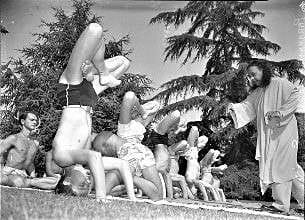
Reason behind various definitions of mind – Mind is mysterious, versatile and multidimensional in its essence. Therefore, mind can’t be defined in one and only way. For example, we can analyse Dream. The mind creates space for dream to take place, mind creates elements for the dream, mind creates dream, mind experiences the dream, mind goes through various changes in dream, mind observes the dream, mind remembers and forgets the dream and so on. In this way mind alone performs various functions and displays various aspects of it. Like dream mind alone perform various functions during wakeful and deep sleep states. That’s why mind requires multiple ways to be properly defined in broader perspective.
How mind originated – The theory of creation details the origin of mind. There are many theories of creation. According to Aitareya Upanishad (1.3.4), mind emerged from the heart of the creator Brahma and from mind came moon who is the presiding deity of mind. In the state of Samadhi (superconscious state), mind goes to heart. During sleep also, mind rests into heart. According to Samkhya philosophy, during the process of creation when Sattva Guna of Prakriti interacts with Ahamkara (Cosmic ego), then mind is created. Mind is no other than ego; the idea of “I”.
Seat of mind – Mind in its different states like conscious, subconscious etc. and its functional aspects like intelligence, ego perform various functions and operates through corresponding physical centres in the brain. The brain is not mind. Mind has its seat in the physical brain and it experiences the physical universe through the vibrations of brain. The different seats of mind are as follows –
- Deep sleep (Sushupti) – Heart.
- Dream (Swapna) – Neck.
- Wakefulness (Jagrat) – Ajna Chakra or the right eye.
Cosmic mind and individual mind – Cosmic mind is termed as Hiranyagarbha (Golden womb) in the scriptures. It is the sum total of all minds. Different individuals have individual minds. An individual mind is ever connected with cosmic mind. An individual mind is also in contact with other individual minds. As the mind evolves, we become conscious of mental currents, minds of others who may be near, distant, living or dead. For example – If Ram is a friend of Krishna, therefor Ram’s mind is connected with Krishna’s mind. Now friends of Ram and Krishna because of their mental connections to Ram and Krishna are also in touch with one another. In this manner, one individual mind is in touch with the minds of other individuals in the whole world. According to Swami Sivananda this is called the “Vibhu theory of mind of Raja Yoga.” When we get control over mind then the connection with cosmic mind is a living reality.
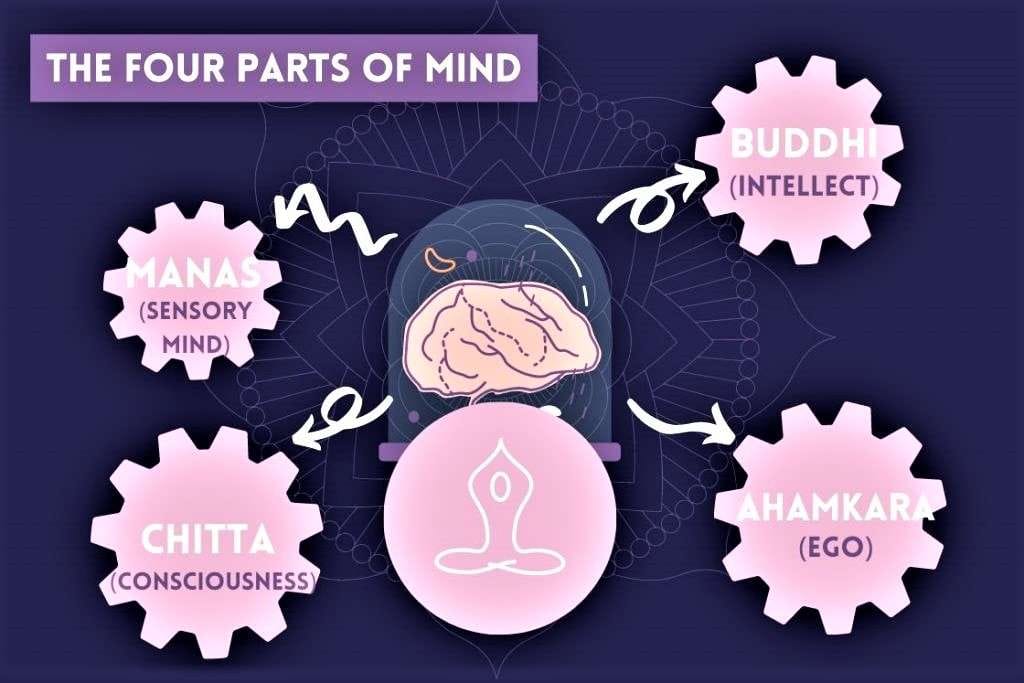
Antahkaran or Antahkarana Chatushtaya (fourfold mind) – Antahkarana is a combined of two words; Antah (internal) and Karan (instrument). It means inner tools. It’s a term to denote the functional aspects of the same mind through which we sense, perceive, think and reason out. There are four functional aspects of mind –
- Manas (Mind) – It is when mind does Sankalpa – Vikalpa (will, think, doubt). It is ordinary and indeterminate thinking; just awareness of something that something is there.
- Buddhi (Intelligence) – It is when mind does Nischaya (discriminate and decide). It determines, decides and uses logic to come to a certain conclusion about something.
- Chitta (Mind-stuff) – It is when mind is the storehouse of Samskaras (impressions, experiences) and seat of memory; subconscious actions, memory. It is Chitta which does Anusandhana (research), Dharana (concentration) and Dhyana (meditation).
- Ahamkara (Ego) – when mind affirms, asserts and develops ‘I-ness’ such as I know that there is something there, I know that I exist and so-and-so. It attributes to one’s own individuality.
Swami Sivananda on Antahkaran (Inner instrument – fourfold mind) – Swami Sivananda describes Antahkaran more eloquently. He says that “Manas, Buddhi, Chitta and Ahankara are only Vritti-bhedas or the Manas has all things for its objects and extends through the past, present and future; it is one only, but has various functions.” You are a Judge when you exercise your judicial powers in the court. You are a cook when you work in the kitchen. You are a president of an association when you sit in the chair in that capacity. You are the same man, but you function differently and you are called by different names according to those different functions. Similarly, when the mind does Sankalpa -Vikalpa (will, thought and doubt), it is called Mind; when it discriminates and decides, it is Buddhi; when it self-arrogates, it is Ahankara; when it is the storehouse of Samskaras and seat of memory, it is Chitta; and also when it does Dharana (concentration) and Anusandhana (research).
How Antahkaran functions together – Antahkaran functions naturally and simultaneously. The form of mind is thought only. Mind selects, attends and rejects. The Mind runs towards objects, Buddhi determines, Ahankara self asserts, self-identifies, self-experiences, Chitta thinks and memorises as (Smriti – memory) of those objects identified by Ahankara. When mind works, then Buddhi, Ahankara and Chitta work simultaneously along with the mind. Mind, Buddhi, Chitta and Ahankara work in a very healthy co-operation. Their actions together are in a flux hence it is difficult to determine their separate functions. In meditation their separate existence and functions are seen as well as felt and eventually transcended.
Antahkaran and Senses (Janendriyas) co-relation – Jnanendriyas are the Sanskrit word for Sense organs. Antahkaran works in co-relation with the senses. Senses connect with the objects, mind attends the senses, intelligence determines, ego identifies and Chitta memorises the experience. This is how they work. But we have infinite past life experiences therefore when antahkarana and sense co-relation happen, our past memories in Chitta also assert. For example – when we see an object for the first time, we may experience it with wonder if we have not seen this before but when we see the same object at other time, our response is different as Chitta asserts the memory of the object. Similarly, our interaction with the objects depends upon our Chitta and its past records. Therefore, in Yoga Sutra of Patanjali, “Chitta” has been used in the first chapter to understand and work on in order to attain liberation.

Four states of mind – The human mind has four states. In each state mind behaves differently. They are identical to the avasthas (states) described in Upanishads. They are –
- Conscious mind or objective mind (Manas, Jagrat – Waking state) – When an individual is connected with the various external objects by means of the senses and modifications of mind, it is wakeful state. In this state, the mind occupies the brain. Actions – Seeing, hearing, reading, experiencing external objects and so on.
- Subconscious mind or subjective mind (Chitta, Swapna – Dream state) – When mind enters Hita Nadi (a nadi which proceeds from heart and surrounds the membrane around the heart), an individual experiences dream. In Dream, senses are absorbed within mind and mind alone creates everything out of its own body, out of the materials supplied from waking state. In this state, subject and object, the seer and the seen – all are one. Actions – Dreaming, imagining and so on.
- Unconscious mind (Sushupti – Deep Sleep state) – When mind enters Purita nadi, an individual experiences the state of deep sleep. In deep sleep, thoughts don’t exist and hence there is no world either. But in deep sleep, the consciousness continues. The proof is that when we are awake, we remember that we were sleeping. Actions – Resting, relaxing, yawning, sleeping, forgetfulness and so on.
- Superconscious mind (Turiya – Transcendental state) – When mind dissolves into its cause; the Self and it ceases to exist, it is Superconscious mind. Superconscious mind, pure mind and Self are the same. Actions – Intuition, wisdom, transcendental knowledge and so on.
Theory of perception – Perception means how we perceive a thing to be existing. This is very interesting thing to know how any perception of an object builds up. There are many theories of perception in the west as well as in the east. Some of them are invalid and mere rational understanding but a few of them are valid and exactly how it is. They are –
- Elastic theory of the mind – It says that the mind becomes elastic and puts itself in touch with sense organs when objects come in contact with senses. This theory is invalid.
- According to another school of thought that there are different parts in mind and they connect themselves with respective senses and so on. This theory is invalid.
- Drishti-Srishti Vada – It says that perceiver and perceived are one. An object is a mental modification externalised or objectified. Just as a spider weaves out web from its own body similarly, the mind throws out the world from itself in the wakeful state and withdraws the world within itself during sleep. This theory is invalid.
- Western Medical Science – It says that light-vibrations from outside strike the retina and an inverted image is formed. The caused vibrations are carried through optic tract and thalamus to the centre of vision in the occipital lobe of brain. At this place, a positive image is formed, then only we see the object in front of us. This theory is invalid.
- Samkhya Philosophy – It says that sense organs are only external instruments whereas corresponding centres situate in the brain. Mind is connected with the senses, the senses with corresponding centres in brain, the centres with physical organs and organs to the external object. The mind presents the sensation to intellect, the intellect takes it to the Purusha (Pure Spirit; Soul). Now real perception takes place. Purusha gives order to intellect, then intellect decides and gives orders back to mind for execution through the motor centres (organs of action). This is a valid theory.

Swami Vivekananda – A Yogi of perfect mind control The Vedantic Theory – It means that Chetana (Consciousness – Individual soul) within us unites with the consciousness in the object and the result is perception. It does not mean that the mind and the senses are useless. The Antahkarana-Vritti (the fourfold mind and its modification) assumes the shape and form of the object it comes across and presents the objects to our view. This is a valid theory.
The above theories of perception throw light on the functioning of mind and how the world is perceived. There is a beautiful proposition about perception in (Brihadaranyaka Upanishad, I.5.3). It says – “I was absent-minded so I did not see. I was absent-minded so I did not hear. It simply means that a person sees and hear with mind. Desire, resolve, doubts, faith, absence of faith, steadiness, unsteadiness, shame, intelligence, fear – all these are in mind and they are but mind alone.
Swami Vivekananda on perception – Swami Vivekananda (in His commentary on Yoga Sutra of Patanjali, Chapter – Pratyahara and Dharana) describes decisively about how perception comes. He says, – “First of all there are the external instruments, then the internal organs, acting in the body through the brain centres and there is the mind. When these come together and attach themselves to some external objects, then we perceive it. All actions, internal or external occur when the mind joins itself to certain centres, called the organs. Willingly or unwillingly, it is drawn to join itself to the centres, and that is why people do foolish deeds and feel miserable, which, if the mind were under control, they would not do. What would be the result of controlling the mind? It then would not join itself to the centres of perception and naturally feeling and willing would be under control.”
Mental perception happens serially and nature’s advantages in sense perception – Mental perception or cognition takes place serially and not simultaneously. Only in the state of Samadhi (Superconscious state – where past and future merge in the present) simultaneous knowledge can be had which is possible for a Yogi. Even though mind comes in contact with several objects through different sense organs, yet mind can send only one kind of sensation at a time to intelligence and inner mental organism for perception. This simply means that mind can think of only limited things. Mind cannot think of a colour without thinking of an object of the same colour. Although mind attends to only one object at a time – either hearing or seeing or smelling but it shifts from one object to another so rapidly that it appears to be grasping several things at a time. That’s why an ordinary man thinks that he can have several ideas at a time. Mind cannot hear and see at the same time. When we seriously think of a problem, we neither see nor hear nor feel. The mind moves so quickly backward and forward from one to another object, that for us it appears that mind can do two things at a time. In some people one of the sense perceptions is more developed compared to other sense perception. For example, a blind may have acute sense of hearing or smelling. If in someone one sense organ is defective then nature compensates by developing other sense organ more efficient which is a kind of advantage that one may have.
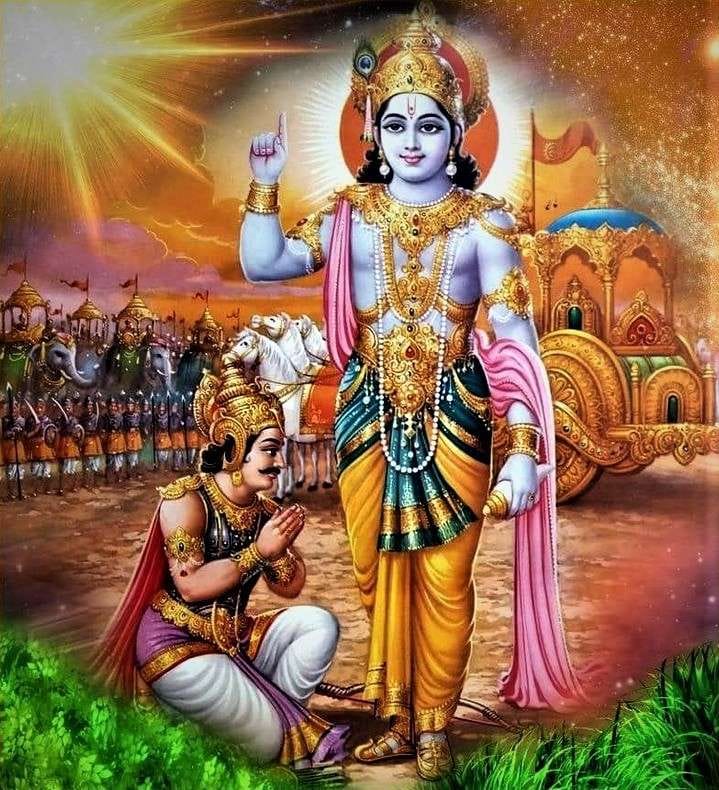
Mind and Atman (Soul) – In Bhagavad Gita (3.42), there comes a very beautiful proposition. It says –
Sanskrit –
इन्द्रियाणि पराण्याहुरिन्द्रियेभ्य: परं मन: |
मनसस्तु परा बुद्धिर्यो बुद्धे: परतस्तु स: || 42||
Translitaration –
indriyaṇi parasṇyahur indriyebhyaḥ param manaḥ
manasas tu para buddhir yo buddheḥ paratas tu saḥ
Translation –
The senses are superior to gross body, superior to senses is mind. Beyond mind is intellect and even beyond intellect is the soul.
This is the chain of relation (body – senses – mind – intellect – soul). More elaborately, it is actually (body – senses – mind – intellect – chitta – ego – soul). It simply means that Soul is at the base of everything. Mind which looks intelligent and powerful, actually works in the light of Soul. The underlying substratum and the source for mind is Atman (Soul, Brahman or Absolute Consciousness). Mind does not have its own power. It is a matter only which in meditation disintegrates into its components and eventually dissolves. That is why in Yoga, we have the idea of controlling the mind, transcending the mind, expanding the mind and so on.
What is Atman (Soul) – The Soul is actually an incomprehensible topic. It can’t be put into words. However, in the ancient scriptures of Yoga such as Veda, Upanishad, Purana, Darshana, Tantra, Bhagavad Gita and so on, the Soul has been talked about. Bhagavad Gita (Chapter 2), is very important to study about Soul. The negative term that is used in Scriptures especially Veda and Upanishad, to describe the Soul is called, “Neti-Neti”. It means “not that, not that”, which means that wise people can’t express the Soul as, “it is like this, it is like this”. Some of the characteristics of Soul in Gita, Chapter 2 is as follows – “The soul is neither born nor the soul dies at any time. The soul has not come into being, does not come into being and will not come into being. The soul is unborn, eternal, ever-existing and ancient. Then soul is not slain even if the body is slain. As a human puts on new garments, giving up old ones, similarly the soul accepts new body by giving up the old and feeble one. The soul can’t be cut by any weapon, nor burnt by fire, nor moistened by water, nor dried by the wind. The soul is eternal, everywhere, unchangeable, immovable and continuous. Some looks at the soul with wonder, some describes soul with wonder, some hears of soul with wonder, while others even after hearing about, cannot understand Soul at all.
According to the scriptures and enlightened people, the Soul is our true nature. Because of ignorance, we identify with mind, body and sense complexity. In the process of enlightenment, we transcend body, senses and mind and realize that we are the eternal Souls. The Soul is also considered as God, Almighty, Absolute consciousness and so on. In the individual existence, it is Soul but as the universal existence it is God. God and Soul are the same and one.
Consciousness and Awareness – Some teachers use the word Consciousness to represent Soul and Individual self. Here we mean Consciousness as Mind (Chitta – awareness is the act of chitta). Mind and consciousness are the same entity. Awareness is a very useful word. It is a special act of consciousness/mind which helps us being involved into an act effectively. In Yoga it has been given higher importance. Swami Satyananda describes awareness. He says, “Awareness is the ability to stand back and observe one’s mental and physical activities. If a man is aware then he becomes a spectator of his activities both internally and externally”. Awareness is an inherent attribute of consciousness. In awareness there is perception, cognition, understanding, right course of action. This awareness develops from the grosser to subtler.

Four kinds of mind according to the Guna of Prakriti (qualities of nature) – According to the three Guna of Prakriti, mind is of three kinds. They are –
- Sattvic mind – It is calm, harmonious, intuitive, meditative, detached and aims towards the Soul (Atman).
- Rajasic mind – It is passionate, desirous, possessive and dominant.
- Tamasic mind – It is filled with inertia and darkness. It sleeps and lack orientation.
- Trigunatita mind – It is when a Yogi attains Samadhi (superconscious state). He goes beyond the realm of the body, mind and Gunas.
The Four levels of knowledge – There are four levels of knowledge which mind reflects. They are –
- Instinct – The reflex action of one hand to drive away an ant crawling on other arm, is the instinctive knowledge of mind. The mind does not reason here. While crossing a street, our careful movement is our instinct. There is no Vritti (modification of mind) here. Instinct is more active in animals, birds and children where the ego does not interfere with the free flow of knowledge. The work done by instinct is more perfect such as wonderful nests by birds.
- Reason – Higher than instinct is reason which is found only in human beings. It works on facts, reasons out, concludes, decides and so on. It leads one to intuition in course of time. Swami Sivananda says – “Belief, reasoning, knowledge and faith are the four important psychic processes”. First, we believe in something, then we reason out about it, further we get knowledge of what we believed and finally we build faith.
- Intuition – Intuition is spiritual experience which is the function of Causal body (Please refer to the blog about Body). Intuition transcends reason, but does not contradict it. Intellect takes a man to the door of intuition and returns back. Intuitive knowledge comes like a flash. Intuitive knowledge includes inspiration, revelation, spiritual insight and so on.
- Atma Jnana (Super intuition) – Atma Jnana is the highest level of knowledge which comes when a Yogi liberates his mind and transcends beyond all limitations. It is then the only Reality.

Mind, Prana, Semen and Kundalini – To know about Kundalini, please refer to the blog on Kundalini. Mind and Prana are the two principal elements and they work together. Prana (energy) is the outer layer of mind. Prana processes the food, turns it into chyle and blood and sends it to brain and mind. Then mind is able to think. Semen is one of the finest food materials which prana manufactures by properly assimilated the food. Prana and mind are like flower and its smell. One-pointedness and controlled state are two states of mind whereas vibration and Spandan (subtle controlled state) are two states of Prana. When mind concentrates then vibration of Prana comes by itself. Mind, prana and semen are one in connection. If we control any one of these three, then the other two are controlled naturally. In Hatha Yoga we control prana, in Raja Yoga we control mind, in Jnana Yoga we control intellect, will and so on. Kundalini energy can be aroused only when mind is free from passions of mind. When Kundalini awakens then the mind along with prana passes upwards through Brahma Nadi (within Sushumna). Then Kundalini moves from Chakra to Chakra and layers of mind open up and a Yogi receives different experiences as well as different powers.
The Psychic States – When we sit in silence and watch the various mental phenomena, then we come across various psychic states. It is interesting to analyse the inner psychic world. Some of them are –
- Instinct – It is an involuntary prompting to action which is powerful in humans as well as in animals. Self-preservation (Hunger, thirst), Reproduction (Sex, pleasure), and Herding instinct (Companionship) are instinct.
- Impulse – It is a sudden propelling force of three kinds (of thought, of speech and of action).
- Emotion – It is a combination of thought and desire. Raga (love, attachment) and Dvesha (aversion, hatred) are the two important emotions. All different emotions come under these two.
- Sentiment – Created by mind, it is deception of three kinds – Religious, Moral, Aesthetic sentiment.
- Moods – It is a prevailing mental state of two kinds – Harsha (Joy, Happiness) and Shoka (Grief or depression). Now there is joy and now there is depression – that’s how they work.
- Whims and Fancies – It is called “Taranag” in Sanskit which is a sudden change in the mind. They rise and fall quickly. It upsets us very much.
- Imagination – Mind is without a vacuum even for a moment as it has got infinite preoccupations through vain imagination, fear, worry and so on. Imaginary fears, exaggeration, concoction, fabrications, dramatization, day dreams are all due to this power of imagination. Even a healthy person is affected by this.
- Temperament – It is behaviour and feelings. It is very difficult to check and balance. Temperament is greatly affected by environments, education and experience. It is also induced by secretions from endocrine glands such as Thyroid, Thymus, Parotid, Pineal, Suprarenal, etc. directly absorbed into blood.

The powers of mind – Mind has so many important powers. Some of them are as follows –
- Ichha Shakti (Power of will or volition) – This is arising of desire in mind.
- Kriya Shakti (Power of action) – This is action for the gratification of desire.
- Jnana Shakti (Power of knowledge) – This is plans, schemes and finding methods for the gratification of the desired object.
- Vedana Shakti (Power of perception) – This is power of cognition/sensation/perception/knowing through senses.
- Smriti Shakti (Power of memory) – This power does three things – grasping, holding, recollecting needed memory. Smriti-Sakti participates with Vedana Shakti, in the act of grasping.
- Bhavana Shakti (Power of imagination) – This is forming a mental picture of any description without having seen it.
- Manisha Shakti (Power of judgment) – This is Power of comparing, contrasting, inferring, discussing, concluding and so on. It has got two subdivisions – Tarka (logical reasoning) and Nirnaya (ascertainment). Tarka further has got two other subdivisions – Anumana (inference) and Paramarsha (discussion).
- Dharana Shakti (Power to hold) – This is a part of memory or Smriti Shakti (Power of memory). It means having fixed and steady ideas without wavering.
- Ekagrata Shakti (Power to concentrate) – This is to be one-pointed at a particular thing. Swami Vivekananda was excellent in this.
- Darshan Shakti (Power of visualize) – This is to create/visualize image and idea of something as it is.
- Sajagta Shakti (Power or awareness) – This is to be aware of something or to be aware of a thing while being engaged into it. This is power of Chitta.
- Swarupa Shakti (Power to witness) – This is to be staying detached even while engaged with any event or thing by simply observing.

The three Doshas (defects) of mind – The mind has three kinds of defects which obstructs the potential of mind. They are –
- Mala (Impurity) – Kama (desires or too much sexual appetite), Krodha (anger), Lobha (greed), Moha (delusory emotional attachment), Mada (vanity, pride, ego) and Matsarya (envy, jealousy) are the impurities. It is tackled by doing Nishkama Karma (selfless action).
- Vikshepa (Tossing) – Mind moves in vain among sensual objects without resting on any object firmly by an excessive fluctuating power. It is tackled by prayer, concentration, pranayama and Raja Yoga.
- Avarana (Veil of ignorance) – Mind and its various modification create veil of ignorance which is forgetfulness of one’s own true nature. Avarana is tackled by Knowledge of true nature, study of Vedantic literature, meditation and constant contemplation of “Who am I?” and “I am That”.
Daivi (Divine) and Asuri (Demoniac) Sampati (property) of mind – Bhagavad Gita (Chapter 16) divides people in two categories; divine and demonic. This division is on the basis of properties which situate in mind. These properties according to their dominance make us divine or demonic. God Krishna enumerates those properties as follows –
- Divine property – fearlessness, purity of mind, promptness in spiritual knowledge, charity, senses control, sacrifice, study of scriptures, austerity, straightforwardness, non-injury, truthfulness, absence of anger, renunciation, peacefulness, restraint from fault-finding, compassion toward all beings, absence of covetousness, gentleness, modesty, lack of fickleness, vigour, forgiveness, fortitude, cleanliness, enmity towards none and absence of vanity.
- Demonic Property – Hypocrisy, Arrogance, conceit, anger, harshness and ignorance.
The divine properties open the door to liberation, while the demonic qualities cause bondage. In the path of Yoga, it is very important that we should work towards cultivating divine properties. All great Yogis of the past reflected the divinities. Swami Vivekananda (in His commentary on Yoga Sutra of Patanjali), while describing Pramana (right knowledge) says, “A man may be wicked, and yet make an astronomical discovery, but in religion it is different, because no impure man will ever have the power to reach the truths of religion.”
Ashta Pasha (eight fetters) of mind – In the standard scriptures of Tantra (Kularnava Tantra, 13.90), there is a description of eight fetters of mind which drag us into this cycle of universe (process of continuous birth and death). These fetters are in mind which turn us away from spiritual life and its progress. One who wants to progress in spiritual life needs to transcend these fetters of mind. They are –
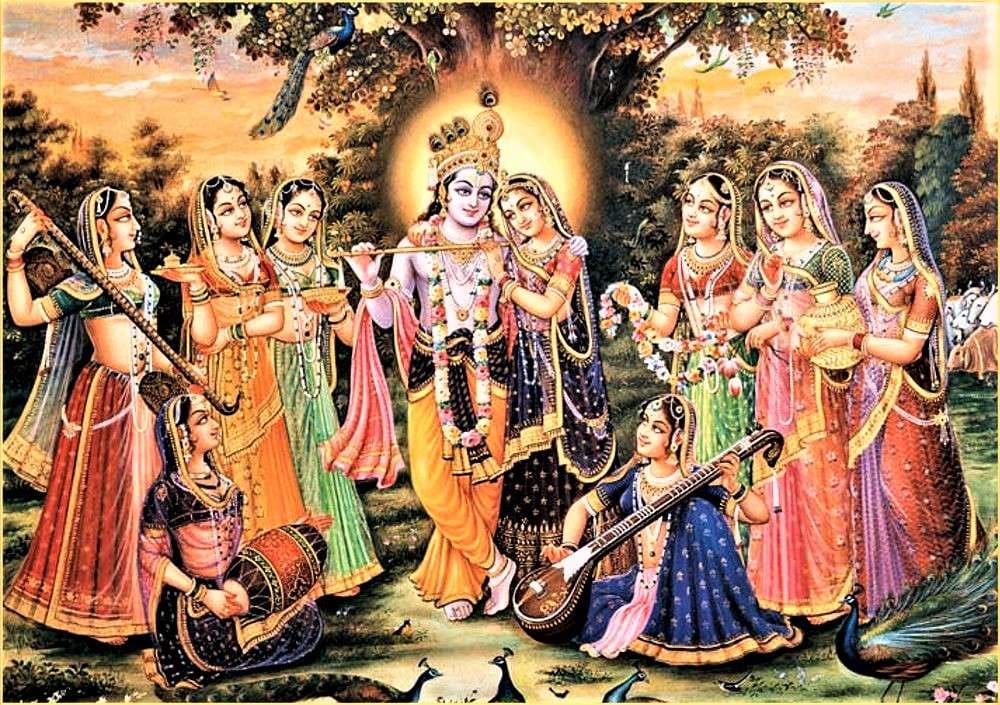
Sanskrit –
घृणा शंका भयं लज्जा जुगुप्सा चेति पञ्चमी ।
कुलं शीलं च मानं च अष्टौ पाशाः प्रकीर्तिताः ॥
पाशबद्धो भवेज्जीवः पाशमुक्तः सदाशिवः ।
Transliteration –
Ghrina shanka bhayam lajja jugupsa cheti Panchami
Kulam sheelam cha maanam cha ashtau paashaah prakirtitah
Pasha baddho bhave jivah pasha muktah sadashivah
Translation – Ghrina (Aversion, Scorn), Shanka (Doubt), Bhaya (Fear), Lajja (Shame), Jugupsa (Censure, Reproach, Condemn), Kula (Caste), Sheela (Modesty) and Maan (Self Respect, Reputation) are the eight chains which bind Jiva (individual Soul) to Prakriti (Maya or phenomenon world). Bound by these eight bondages is called Jiva (Individual soul) and one who is free from all these bondages is called Sadashiva (Universal Soul, Shiva, God).
Examples of people who were beyond the Ashta Pasha (Eight fetters of mind) – All the Gopikas (female devotees of God Krishna), were free from all these bondages of mind. They left everything for God Krishna. They did not care about their family ties, social order, their personal reputation in society, fear of any kind and even their own identity as women to their husbands and themselves as women. For them God Krishna was everything. This brought into them the bliss of universal love and they became the eternal devotees of God Krishna. Entire Vrindavan (a place in India where God Krishna did divine sports with His female devotees) is filled with the stories and memories of divine love of God Krishna and Gopikas. Ramakrishna Paramhamsa (an enlightened sage of 19th Century), used to go to forest in the middle of night to meditate. On the way He would drop His cloths and become completely naked and meditate underneath a huge tree. His cousin called Hridaya who looked after Him, would notice this. He asked Ramakrishna about why he meditated naked. Ramakrishna answered mentioning about the eight fetters, and further said that He dropped His cloths to avoid shame of having a man’s body, to be free from the idea of body and visited the forest in the middle of night to be free from fear of going in the middle of night. All Yogis, all devotees and all wanderers of spiritual path, gradually become free from Ashta Pasha by the grace of God.
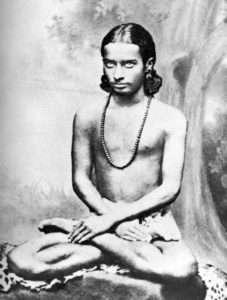
Methods to work on mind for inner and outer development – Mind is a very difficult topic in terms of fully understanding it and working on it. However, it is not impossible. There is a beautiful reference in Bhagavad Gita about it. Arjuna doubting about the efficiency to control mind, asked God Krishna, if it was possible to control the mind. God Krishna agreed to his doubts and answered in a very beautiful verse (Gits, 6.35). He said –
Sanskrit –
असंशयं महाबाहो मनो दुर्निग्रहं चलम् |
अभ्यासेन तु कौन्तेय वैराग्येण च गृह्यते || 35||
Translitaration –
asanshayam maha-baho mano durnigraham chalam
abhyasena tu kaunteya vairagyena cha grihyate
Translation –
O mighty-armed son of Kunti, the mind is indeed very difficult to control. But by Abhyasa (Constant and regular practice) and Vairagya (Detachment and dispassion), it can be controlled.
Very similar answer is also given in Yoga Sutra of Patanjali (1.12). It says –
Sanskrit –
अभ्यासवैराग्याभ्यां तन्निरोधः ॥1.12॥
Transliteration –
Abhyasa vairagyabhyaṃ tan nirodhaḥ
Translation – These Vrittis of Chitta are controlled by practice and detachment.
Thus the scriptures of Yoga, unequivocally express that through constant practice and dispassion, mind can be controlled and transcended.
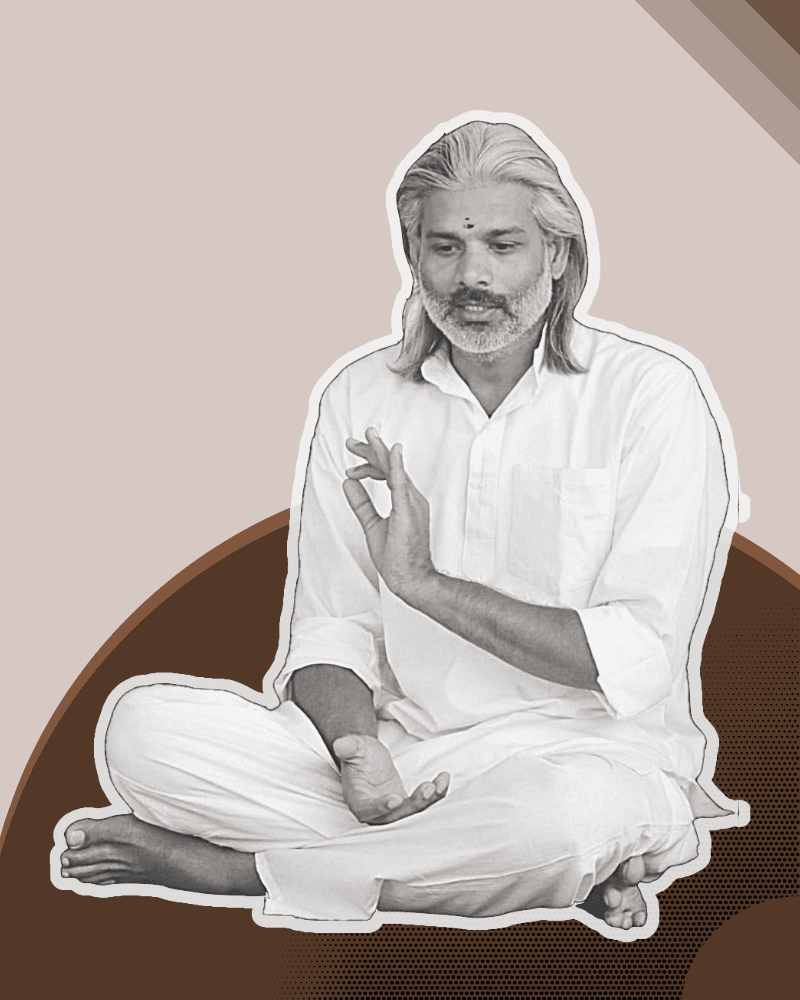
Abhyasa (Practice) and Vairagya (Detachment) explained – Practice and detachment are eternal methods of working on mind. Practice simply means being regular with the tools for controlling the mind. Detachment simply means developing disinterest in mind towards sense objects in a friendly manner. There are many practices and many guidelines described in scriptures for controlling the mind in order to receive spiritual illumination. In the practical life also, we can find this very useful in terms to having a peaceful and efficient mind. The order of approach towards control of mind is systematic. The possible steps in order are as follows –
(Practice managing conducts and attitude of one’s life – life-style – managing senses – managing mental responses – concentration of mind – practising witness – enlightenment).
Some helpful practices for practising Abhyasa (practice) and Vairagya (Detachment) – There are some possible tools for “Practice and Detachment” which may be helpful for us. They should not be misunderstood as guidelines for any faith-based orthodox life. They are universal for people from all faiths. There are many kinds of practices one can do. Some of them in order are –
Practice –
- Engaging oneself into right activities such as work for livelihood by fair means, looking after friends and family and so on with proper awareness to dilute Tamo Guna (Inertia and inactivity). This gradually develops Rajo Guna (Activity).
- Maintain the activities and try to engage into it according to the needs only. This dilutes Rajo Guna and develops Sattva Guna (peace and harmony).
- Developing Sattva Guna (state of peace and harmony) within oneself.
- Developing virtues (kindness, love, sympathy).
- Association with virtuous people.
- Time to time living in natural environment.
- Practising Yoga (Blend of Bhakti, Karma, Jnana, Raja, Hatha, Kriya, Kundalini, Swara – Yoga) and Meditation regularly under proper guidance.
- Regular individual prayers and occasionally group prayers.
- Making appropriate efforts not to shun away but to fulfil one’s duty and responsibility.
- Taking parts in festivals and social activities of public welfare with modesty.
- Practising selfless work.

Maharaj Ji expresses LOVE to all Doing favour to others.
- Time to time going for pilgrimage and places of enlightened people.
- Looking after fellow humans.
- Looking after birds, animals, plants, trees, wild and things around according to one’s efficiency.
Detachment –
- Understanding the loads of desires and categorising them into important and unimportant ones.
- Fulfilling the important desires and putting aside unimportant desires. For example –
Important desire – While living in a cold country requires travelling to warm places for a short time.
Unimportant desire – Going for another trip just to socialize with some friends immediately after sufficient time off at a holiday trip.
- Sticking to the fulfilment of important desires only.
- Shifting from important desires to important needs.
Important needs – nice dress according to weather.
Unimportant needs – buying another sun glass in addition to one or two already in possession.
- Sticking to important needs only.
- Fulfilling only needs and strictly restraining the desires.
- Sticking to things that develop detachment. For example – natural food, noble books, becoming friends with introspective people, refraining engagements from late night parties and hip – hop friends, spending some time at the bank of calm lake, river and so on.
- Maintaining sometime with oneself and introspecting within.
- Time to time convincing oneself about the transitory nature of world and life.
- Time to time convincing oneself of having no ownership; that one owns nothing, that everything belongs to God.
The above steps of practices and detachment might be helpful to feel a more developed state of mind and its maturity.
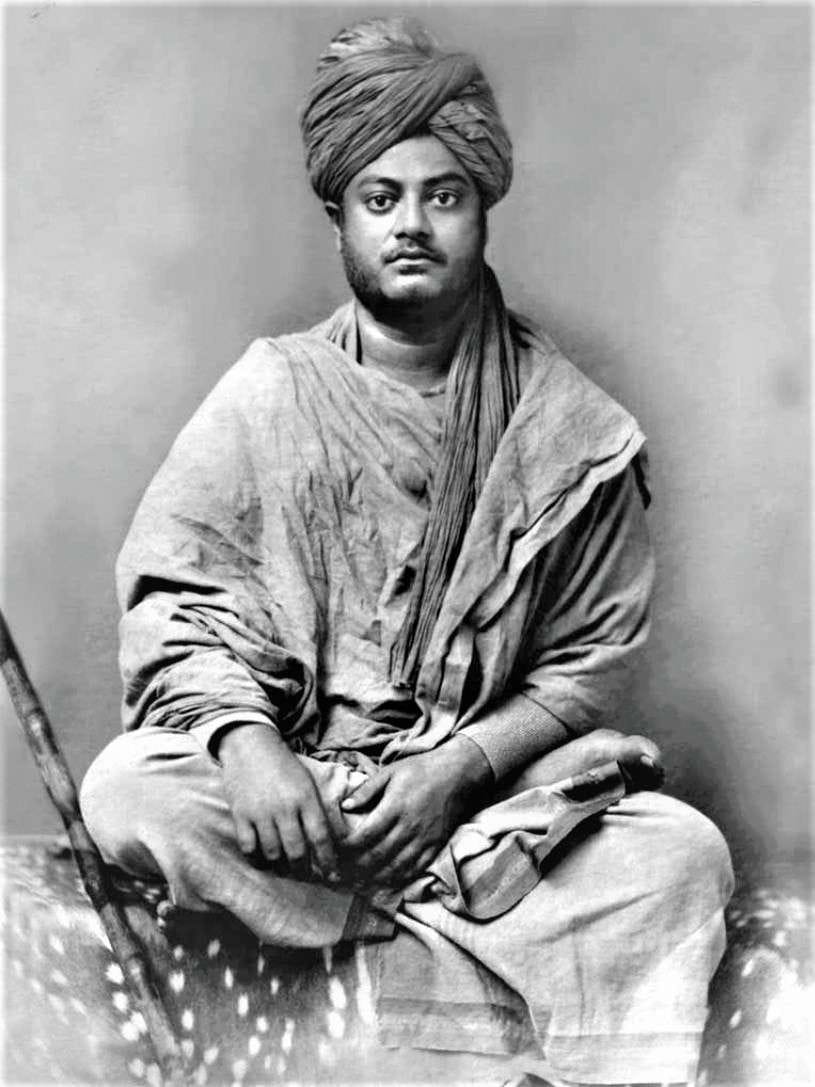
Mental problems and Yoga – In the past as well as in the present there have been records of many kinds of complications which reflect in the body but they have the roots in mind. Some of those are termed as Anxiety, Depression, Bipolar Disorder, PTSD (Post-traumatic stress disorder), Schizophrenia, Panic attacks, Eating disorder, Nervous depression, Nervous breakdown, Sadness, Fear psychology, Borderline personality disorder, Loneliness, Personality disorders, Phobias, Psychosis, Insomnia, Suicidal feelings, Trauma, Body dysmorphic disorder, Paranoia, Dissociation and dissociative disorder, Hearing voice, Hoarding and so on. Modern psychologists have been trying to correct these errors through clinical psychiatry and to some extent this has been helpful but this is not enough compared to the severity of the issue. If tools of Yoga, alternative natural modes of therapy, modern medical science and psychiatry work together then these problems in mind can be easily tackled. If “Abhyasa and Vairagya” are truly practised then they may control many of the symptoms of these mental issues bothering humanity. For all these problems of mind, the single remedy that can work very effectively and universally is “LOVE AND RECEIVE LOVE”. It is a very effective tool however, to implement this into practice is difficult and requires a lot of courage. But it is possible for everyone. We can start this with our own family and friends. Gradually we can expand our dimension and be able to love others and eventually all. Love enhances mental power and frees the mind from all debris. Love transforms mind and eventually enlightens. Maharaj Ji (popularly known as Baba Naam Karoli) used to say, “Love is the strongest medicine. It is more powerful than electricity.” I hope we all may begin to love and receive love.
Conclusion – Mind is a unique part of our existence. It’s powers and possibilities are immense. It has many sides – good, not good, neutral and so on. Whichever side we lean to, the mind reflects that side as its real making. Undoubtedly, it is very difficult to work on mind and control it. But it is also a possible phenomenon. In Gita (6.36), God says to Arjuna that, “One whose mind is controlled and who strives by right means is assured of success; self-realization. That is My opinion”. Here the goal of the control of mind is enlightenment. May be some of us don’t feel any need of enlightenment. But we all know that a peaceful and happy state of mind reflects tremendous amount of energy. This state of mind is very helpful in the fulfilment of practical needs of life and leading a blissful phase of life with family and friends. For both physical gratification and spiritual illumination, a transformed state of mind is very important. Yoga provides those tools to achieve this.
With Love and Gratefulness (Founder Rohit Kumar)
Source – Gita, Yoga Sutra, words of Swami Vivekananda, Swami Sivananda, Swami Satyananda, internet resources and personal study.
Hari Om Tat Sat!

